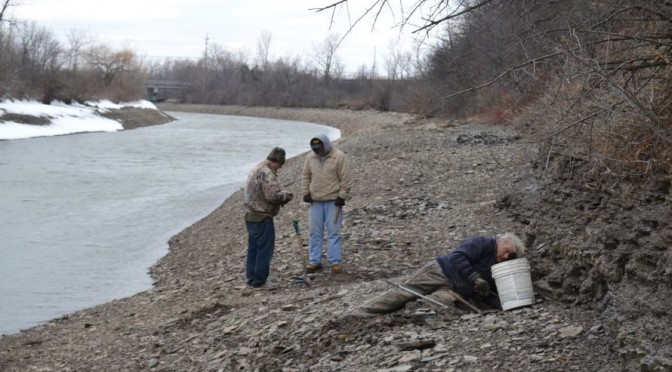An article I wrote for the April 2014 WCGMC News
The Rochester shale comprises the upper 85’-90’ of the Middle Silurian Clinton Group in upstate New York and southern Ontario. The upper two-thirds of the unit contain numerous grey limestone beds, which can be sufficiently resistant to form outcrops, but which are poor in fossil content. The lower 20’ of the Rochester shale is notoriously susceptible to erosion such that outcrop exposure is rare. Unfortunately, it is this rapidly weathering unit at the base that contains the abundant fossil assemblage (specifically trilobites) for which the formation is famous. The best visible exposure of the full Rochester shale section is in the gorge walls of High Falls on the Genesee River. However, this section is agonizingly unapproachable for fossil collection, particularly so the lower 10-20’ of section best known for fossil diversity and abundance.
Over 200 invertebrate fossil species have been identified from the Rochester shale including corals, brachiopods, bivalves, gastropods, cephalopods and crinoids. But, it is the spectacularly preserved trilobites that have attracted collectors to the Rochester shale since James Hall first detailed their occurrence in the 1840’s. The diverse fauna combined with the fine grained shale beds and thin limestone units indicate that the Rochester shale was deposited in warm, well oxygenated marine waters of intermediate depth. But where does one find outcrop to search for fossils?
